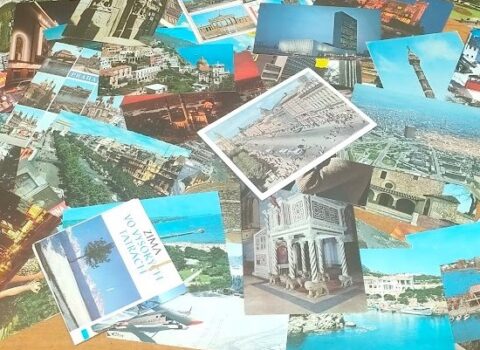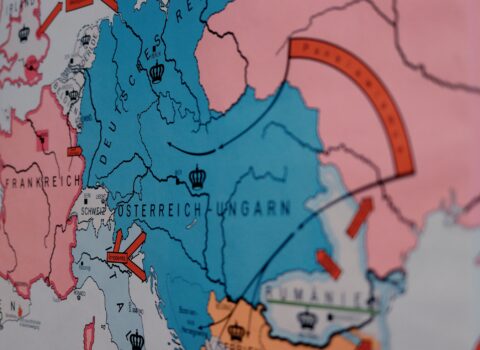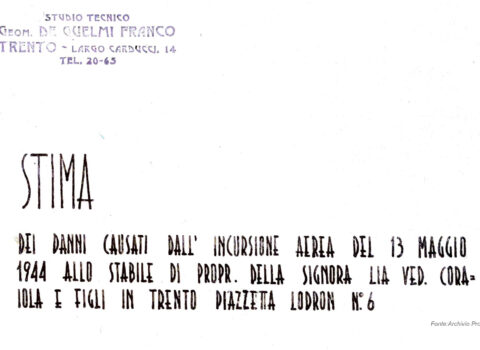
One hundred years of Bruno Kessler
It's been one hundred years since Bruno Kessler was born. From an outlying valley he managed to reach the center of Trentino, never forgetting his roots. He was president of the province at the height of Trentino's modernization, to which he largely contributed.
A year’s worth of research might seem enough to reconstruct the events of a lifetime. It is not. Especially if that life is, albeit relatively short (67 years), dense with activity and ideas. Especially, moreover, if it happens to be lived within what Hobsbawm called the short century: from his birth in 1924 in a land still grappling with the postwar period, to his death in 1991, on the eve of Tangentopoli [ed. the corruption scandal that swept away Italy’s ruling class in the early 90s]. At some point, though, one must start pinpointing one’s work: so here is a first draft of a biography of Bruno Kessler’s.
Bruno Kessler was born in Cogolo di Peio on February 17, 1924. His family was originally from Vermiglio, but his father Giovanni had found work as a warehouseman at the Pont Dam construction site. The second of four children, he lost his father when he was only 4 years old. At that time his mother Rosa decided to return to her home village of Terzolas, where she could also count on the assistance of the Capuchin fathers. In fact, the eldest sons, Onorato and Bruno, were able to study with the friars: the former in boarding school right away, the latter first in the village, later on also in Trento. The paths of the two brothers, divided by only two years, were mirror-image, but if Father Angelico (Onorato), made a career in the order going so far as to become Father Provincial of the Capuchins, Friar Donato (Bruno) decided to leave the novitiate before the year was up. He then took his high school diploma at Rovereto High School in 1944 and was then co-opted into Operation Todt, a German forced labor agency. He spent the last months of the war manning the Pont dei Vodi in Lavis, while already thinking about university.
He enrolled in law school at the University of Padua. He was unable to attend, however, and to support himself with his studies he first did some odd jobs (laborer at the “magazin dei Petteni,” forester), then became a clerk at the Court and finally was hired at the Bank of Trento and Bolzano, run by his friend Nino Andreatta’s father. He graduated on Feb. 25, 1953, with a thesis in criminal law supervised by Professor Giuseppe Bettiol, a Christian Democrat constituent father and president of the DC group in the Chamber of deputies and, a few months later, minister of education.
Bruno’s interest in politics developed rapidly (a passion that emerges clearly in some of his high school Italian essays), although in the early postwar period his active participation in politics did not go beyond chairing the DC’s Terzolas section.
In the 1956 regional elections, he ran as a candidate representing the young Christian Democrats, against the advice of Beniamino Andreatta sr. He thus began a brilliant political career. His 5,784 votes enabled him not only to enter the regional and provincial councils, but also to take on the role of DC group leader in the region and that of finance councillor for the province of Trento. His first term in the regional and provincial council, however, was most remembered for what was immediately referred to as the “Kessler Plan,” i.e., the speech he presented on the South Tyrol issue in February 1960, in which he proposed an expansion of provincial powers at the expense of regional ones and acknowledged the injustices perpetrated in South Tyrol by Fascism.
After the 1960 elections, he was appointed president of the Province of Trento, a role he then held for no less than three terms, making him one of the longest-serving presidents to date. Right from the start, his administration was marked by planning, all aimed at the need to modernize Trentino and foster its economic and social development that could support provincial autonomy, which was not yet there formally, but which Kessler exercised to the fullest extent of the provisions granted by the Statute. Indeed, the first autonomy statute provided great powers for the region and only a few for the provinces, but he leveraged those to carry out his political action.
He took advantage of provincial powers over culture to found the Istituto Trentino di Cultura (ITC) in 1962, through which he set out to create a university in Trento with the Higher University Institute of Social Sciences. Kessler followed also all the lengthy legal negotiations with the government for the recognition, first, of the Free University and finally of the public status for the university.
He used his expertise on urban planning to promote the Provincial Urban Plan (PUP), the first experiment in Italy to do so. The fruit of years of work by technicians and politicians, the plan aimed to promote the coherent economic and social development of the Trentino area through the coordination of public and private interventions. An important innovation promoted by the PUP was the creation of intermediate bodies between the villages and the province: the districts, which were supposed to bring the interests of the communities to the center so as to allow balanced development. The PUP was approved in 1967 by Giuseppe Samonà, Sergio Giovanazzi and Beniamino Andreatta Jr.
The 1960s were the years in the region when the new autonomy statute was being redefined. After the terrorist attacks in South Tyrol and the presentation of the dispute before the United Nations, the need to revise the rules governing autonomy had become even more evident. The Commissione dei 19 (19-member commission) in which Kessler, in spite of himself, did not participate, thus drafted a new statute that, approved in 1972, provided for a transfer of regional powers to the two provinces of Trento and Bolzano.
On the eve of obtaining the funds to support those competencies, in 1973 Kessler was not renewed by party decision to the position of president of the province, despite the very large number of preferences he had obtained (23,900, 8,000 more than the second, Grigolli, who would take his place). He was thus entrusted with the presidency of the region, which he held for a short time, however, only long enough to be able to run in the political elections. In 1976 he was elected to the Chamber of Deputies. His major Roman ally, however, was Aldo Moro, whose political parabola was destined to end tragically only a couple of years after Kessler’s arrival in parliament. He was then undersecretary at the Ministry of the Interior, with Minister Virginio Rognoni, in the first Cossiga government (August 8, 1979 – April 4, 1980). Later on, from 1983 he was a senator. After a short illness he died in Trento on March 19, 1991.
In a letter to some disappointed voters in the Giudicarie region in December 1973, he had promised that the missed renewal of his appointment as president of the province would not be his “exile”. In fact he managed to maintain an important role in Trentino, although he was no longer president. Despite his intentions, however, Kessler’s role was no longer as central as it had been before in the political development of Trentino. He concentrated his action above all in the cultural sphere, in that Trentino Institute of Culture of which he still held the presidency and which experienced enormous development thanks to the birth of research centers: the Italian-German Historical Institute (ISIG) in 1973, the Institute of Religious Studies (ISR) in 1975 and the Institute for Scientific and Technological Research (IRST) in 1976. He laid the foundations, in short, of this foundation of ours that today bears his name.




